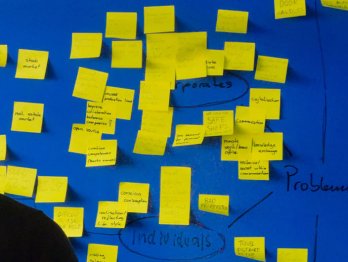What we learned about how innovators approach a new problem
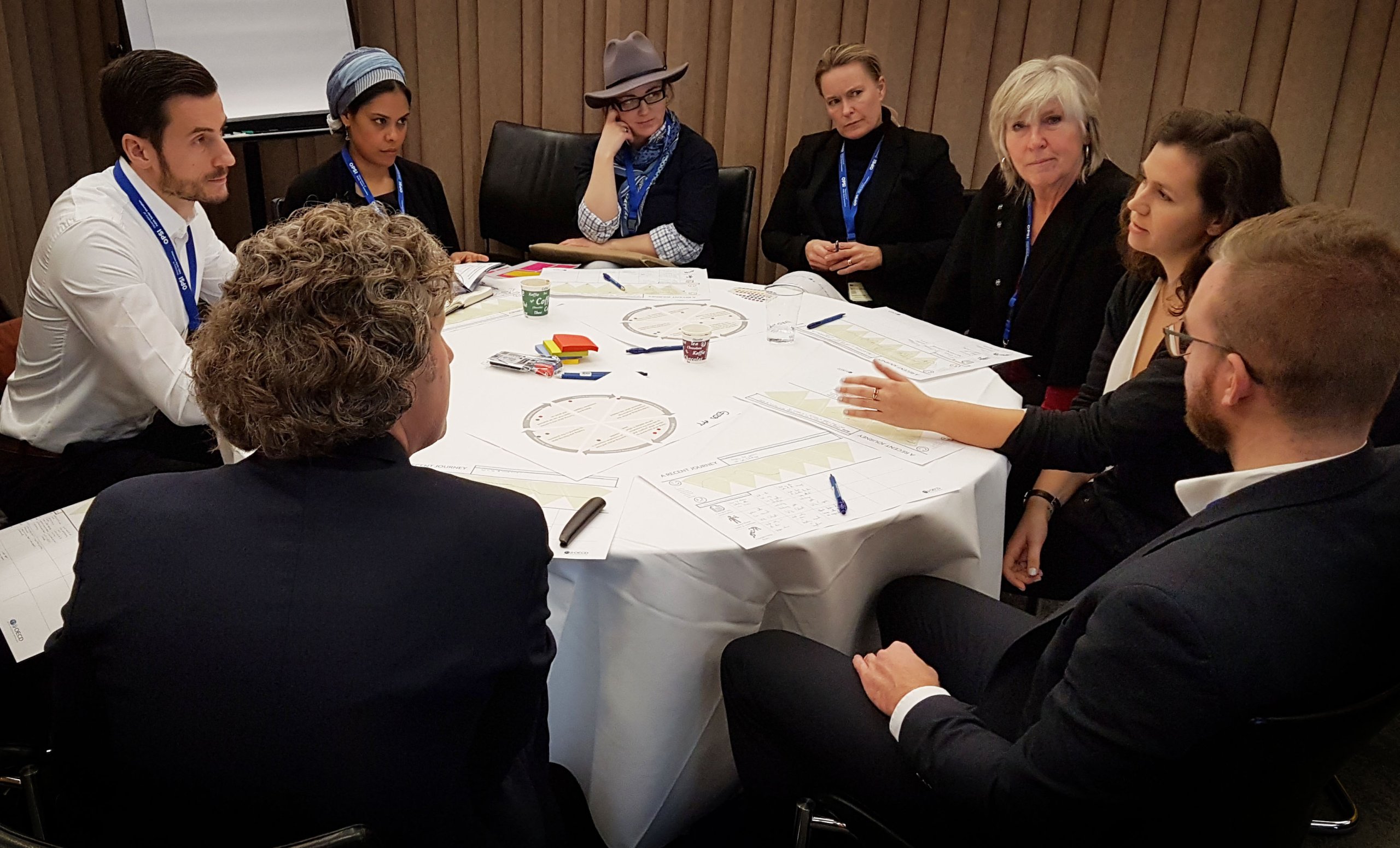
OPSI took advantage of the convening of public sector innovation leaders and practitioners at the November 2017 OPSI conference to host a workshop to learn how innovators approach new ways of doing things in their organisations. We learned a lot that will feed into development of our resources. We also want to offer you the tools and artifacts we used so that you can conduct a similar workshop.
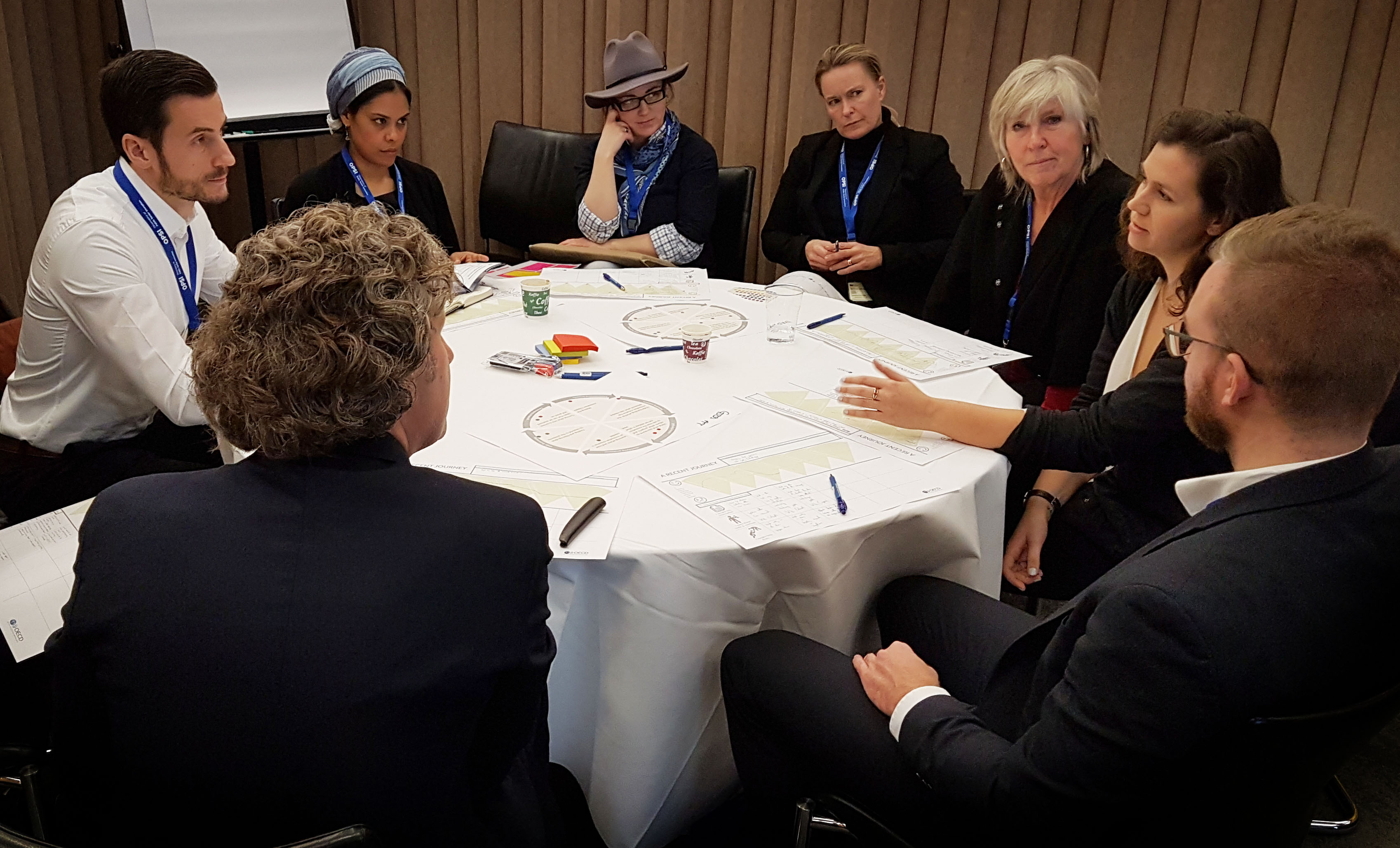
This blog post is part of a series that the OPSI is exploring around innovation toolkits. Other posts in this series include:
Public Sector Innovation and Politicians
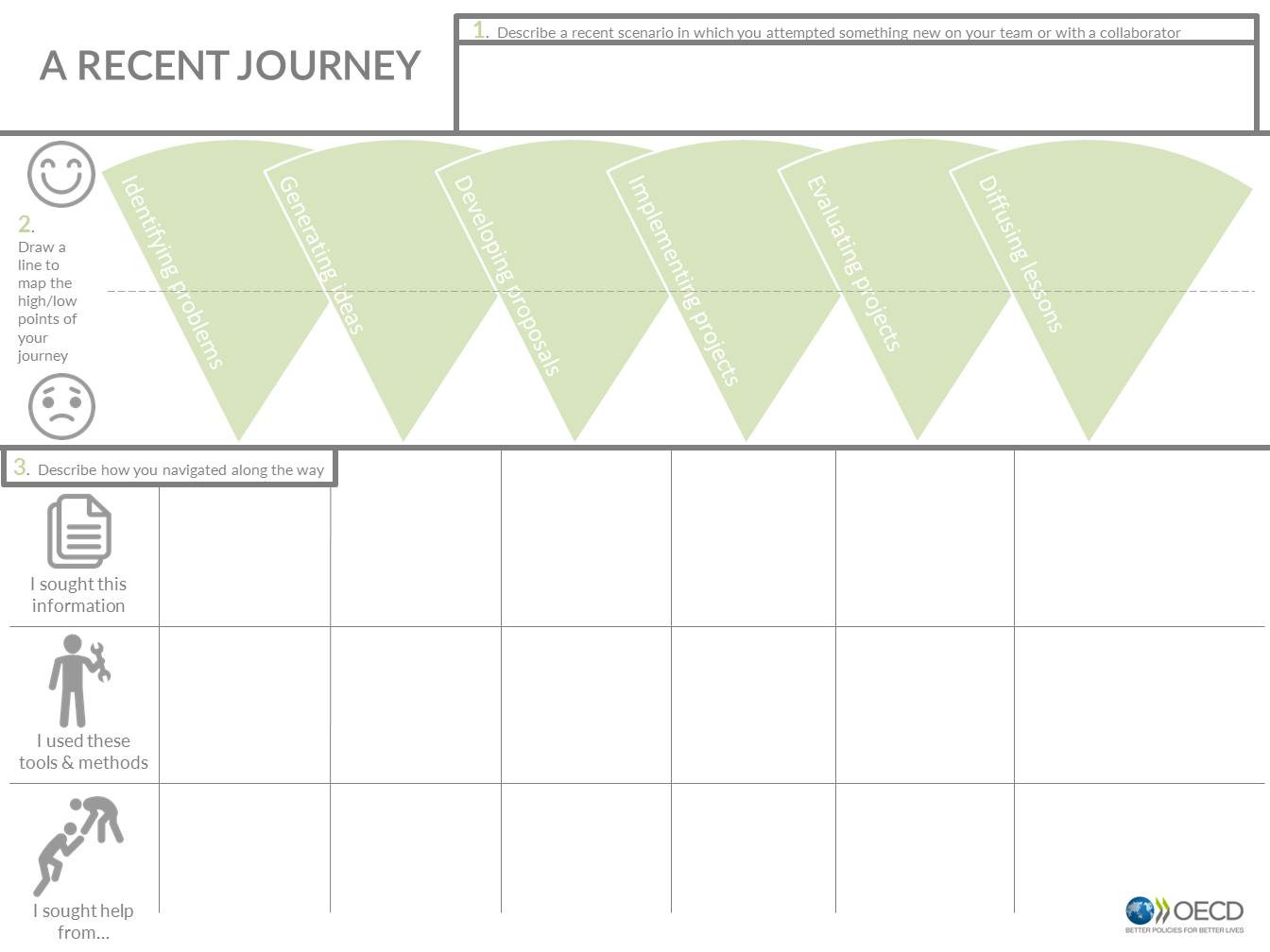
My colleagues and I learned a lot about how public sector innovators navigate innovation tools and methods at the Putting Innovation to Work workshop at the November 2017 OPSI conference, Innovation in Government: The New Normal. This gathering attracted over 500 public sector staff, elected officials, thought leaders, innovation practitioners, and mission-allied NGO representatives. We are sharing what we learned and are also offering up our resources in case you want to do a similar workshop of your own.
My name is Angela Hanson and I focus on innovation tools and methods at the OECD’s Observatory of Public Sector Innovation (OPSI). The November conference was a “trial by fire” experience for me since it was my first week working at the OPSI and my first assignment was co-designing a workshop. Alex Roberts had been doing work around innovation lifecycle and tools and wanted to collaborate on a workshop design that would not only create a relevant and useful experience for participants, but also give us insights and design criteria for development of our own future resource for public sector staff.
Our workshop design choices reflected our workshop goals, including:
- Tangible outputs are produced that help give context for our forthcoming public sector innovation resource
- Participants internalise the OPSI innovation lifecycle by using it to interpret their own experience
- Test usability of some initial tool navigation components
- Diffuse OPSI’s innovation lifecycle framework
- Capture insights from a large group of public sector innovators, including how they navigate problems through the building of a prototype
- Participants build relationships with other workshop participant peers, many of whom were meeting for the first time
Facilitation tactics and techniques included:
- Mix visual with verbal communication for different learners
- Offer practice with empathetic listening and reflection
- Playful elements to encourage divergent thought
- Mix individual reflection with group discussion to cater to different thinking styles
- Non-threatening small group settings for participants, many of whom are strangers
- Active participation throughout the entire session
- Limit discussion group size to 12
How we ran the workshop
The workshop participants included 55 innovation leaders and practitioners from across the world, including from the public, NGO, and private sectors, some of whom we consider partners in the development of our resources and some we consider potential users of the resources.
First, Alex Roberts (OPSI) introduced the facilitators: Benjamin Kumpf (United Nations Development Programme); Matt Kerlogue (United Kingdom Cabinet Office); Enrique Martinez (United States Office of Personnel Management); and, me. Then he oriented participants to the OPSI innovation lifecycle, which was developed after much research, practice and thinking on public sector innovation.
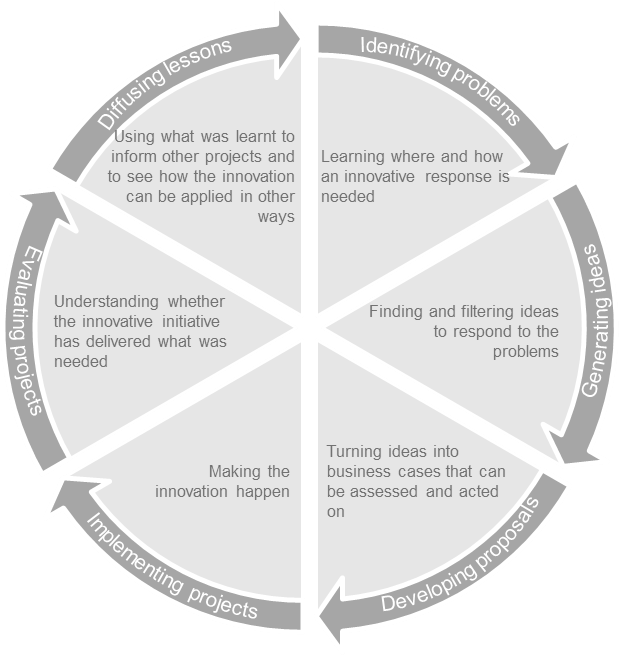
The goal of introducing the lifecycle was not only to disseminate our work but also provide participants with a basic innovation framework for the rest of the workshop session.
Next, participants were asked to move to one of five workshop tables, each with its own facilitator.
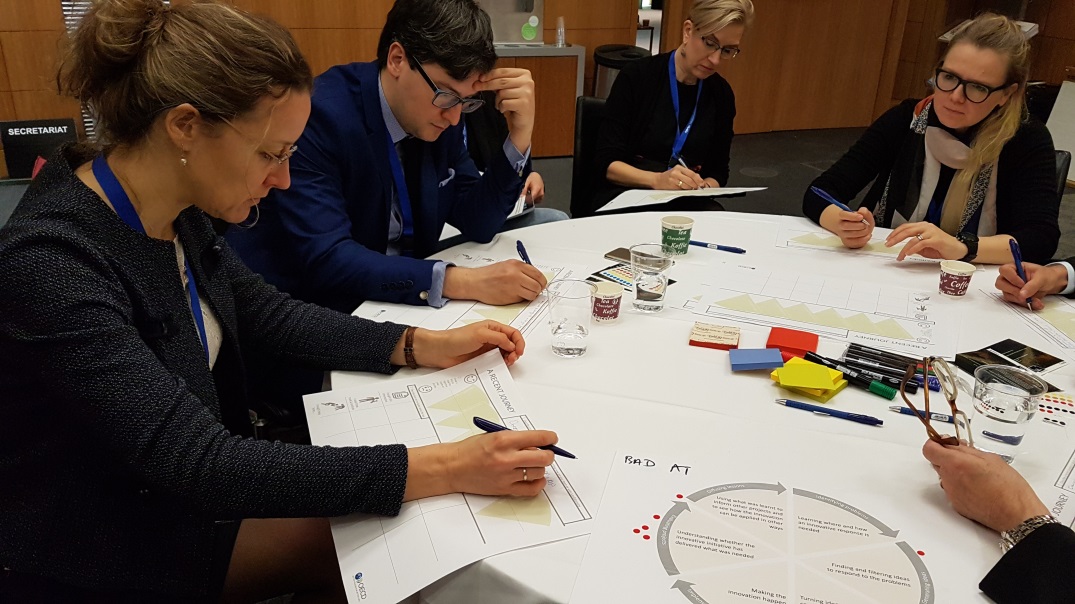
Each facilitator asked participants to indicate which parts of the innovation lifecycle they or their organisations are “good at” and “bad at.” Here is what we found.
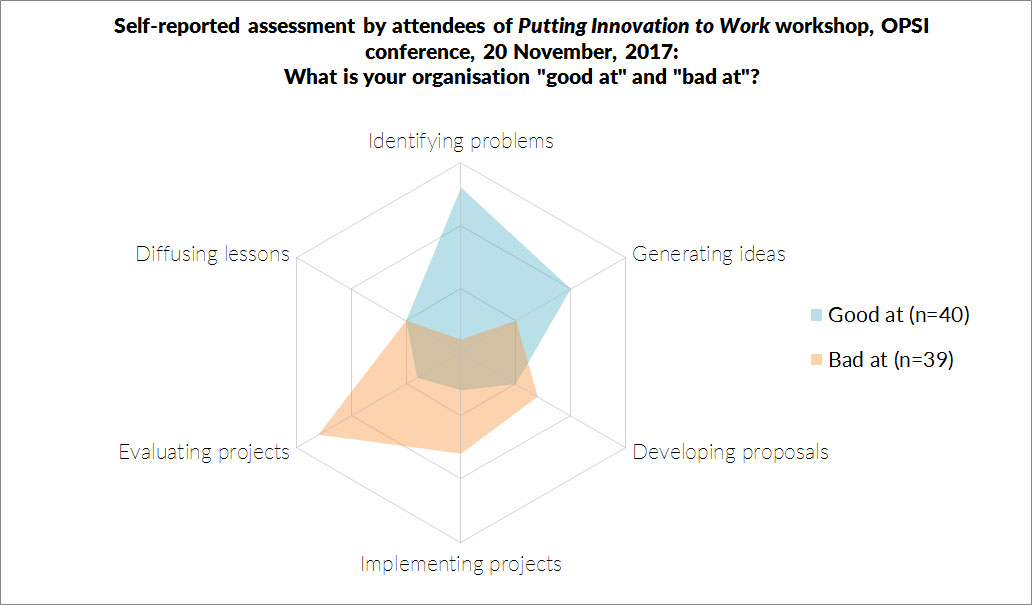
Next, information was sourced from each participant regarding their innovation assets, information channels, and influencers at each phase of the innovation lifecycle and based on a recent recollection of a situation in which they were attempting something new. Each participant was asked to create a journey map of a recent experience attempting something new in their organisation.

Link to Workshop Journey Map Template
Next, participants at each table were instructed to find a partner and interview one another about each other’s journey.
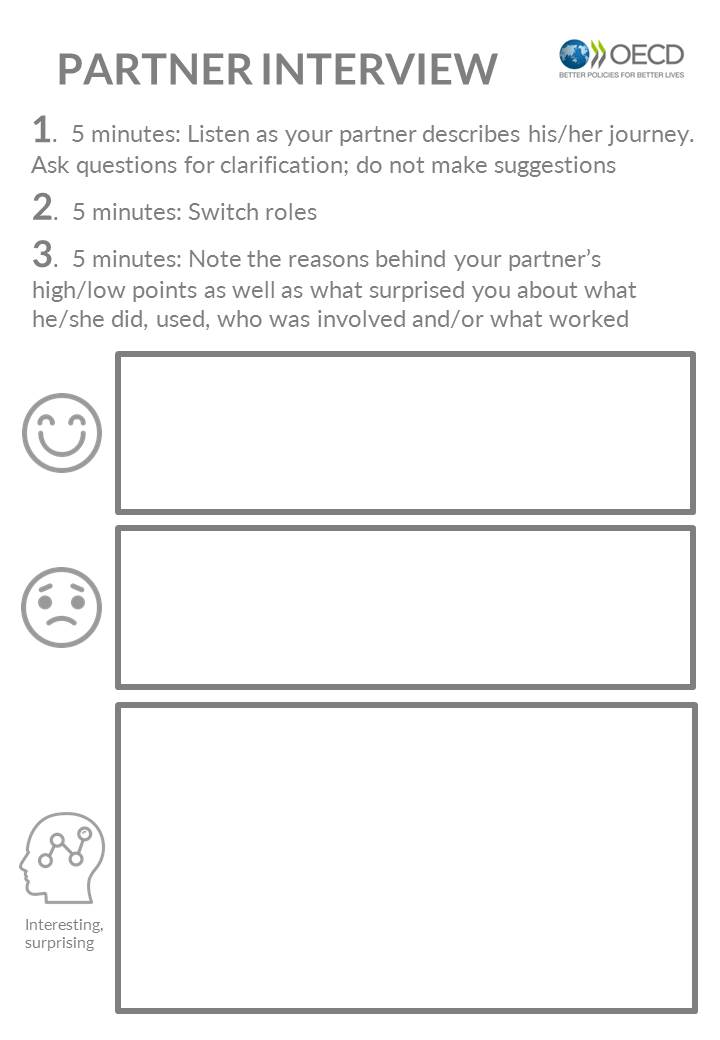
Link to Partner Interview Template
This required each participant to crystallise their own understanding of their situation in order to communicate it and also required the exercise of empathetic listening. Interviewers were asked to note surprising things about their interviewee’s situation. Each facilitator gathered and noted them on a shared piece of paper to synthesise the surprising notes and insights.
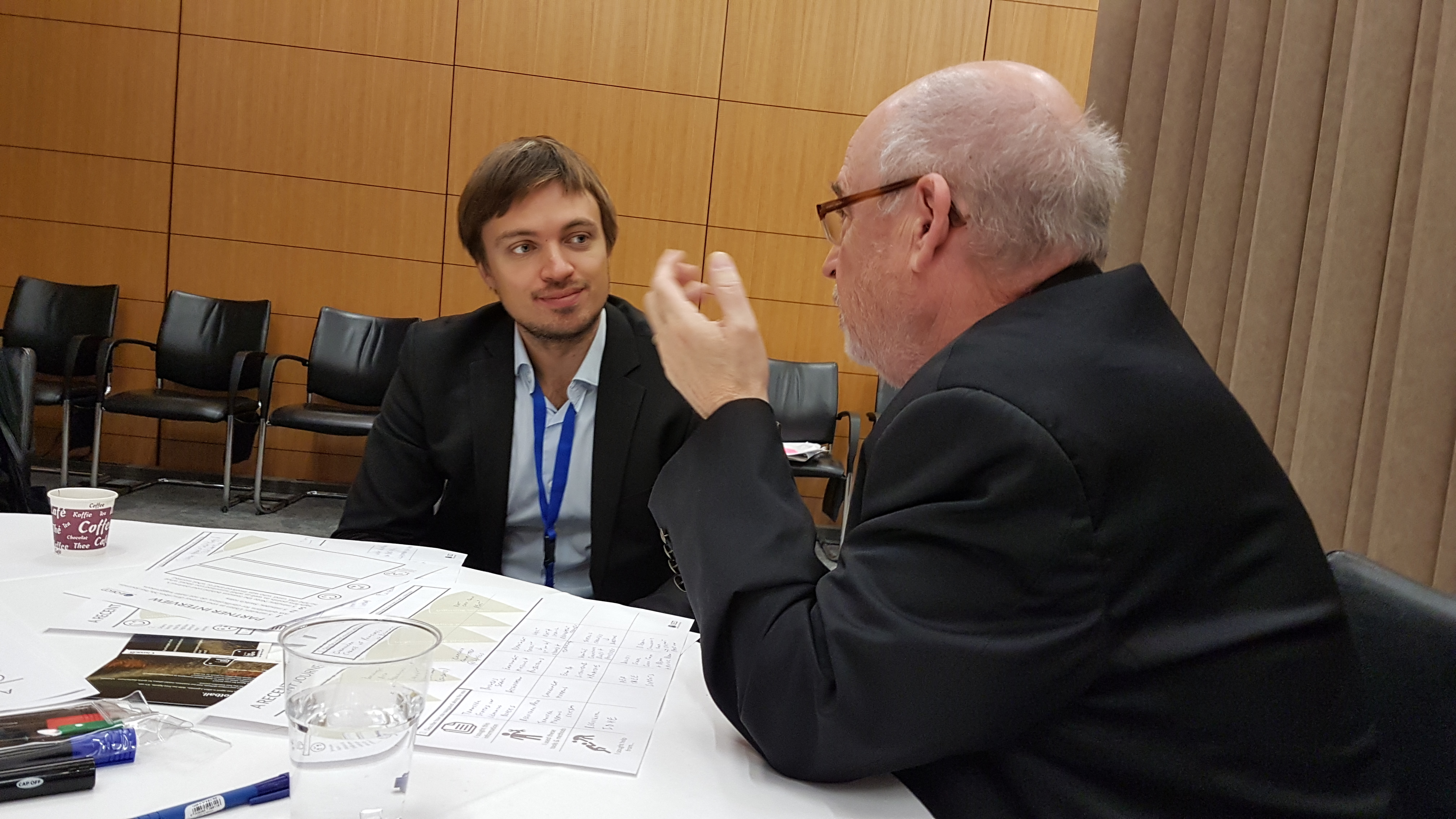
This required each participant to crystallise their own understanding of their situation in order to communicate it and also required the exercise of empathetic listening. Interviewers were asked to note surprising things about their interviewee’s situation. Each facilitator gathered and noted them on a shared piece of paper to synthesise the surprising notes and insights.
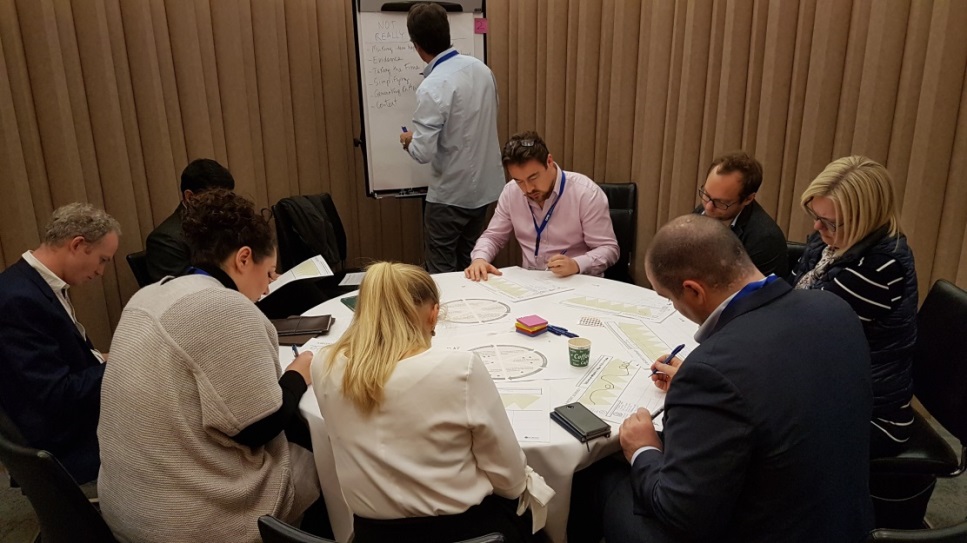
Based on the group insights, participants at each table were divided into two groups and asked to make a prototype of a tool for public sector innovators. The template consisted of a set of “components” one might like to have when looking for a tool (such as “tool description,” “what it’s good for,” “cost,” etc.) as well as a blank canvas with a whimsical title to signal a playful and flexible prototyping atmosphere. In our case, we used the names of mythical beasts, since we joked that tools sometimes have an all-powerful magical problem-solving myth around them.
Each team produced a prototype and then shared it with the other group at their table. Finally, all participants came together and the facilitator of each workshop table shared the prototypes with the full group.
The session ended with group discussion and questions. Finally, the OPSI team shared with participants how the session outputs would be used to inform the development of our resources.
What we learned
- In general, users at the Putting Innovation to Work workshop evaluated themselves or their organisations as proficient with identifying problems but not with developing proposals. Many participants’ journey maps included a plummet in experience during the “developing proposals” phase. We suspect that when it comes to applying an idea or even a fleshed out concept in their real environments, a lack of contextual awareness or issues and changes in priorities leads to the grinding halt of momentum. This can be a great opportunity to learn, re-frame and pivot if time and opportunity allow.
- There was lots of evidence that innovators want to know if someone else has tried something before, both from discussion notes and journey maps indicating search patterns in early stages of innovation cycle. This tells us that there is a need to be solved and there is an important intervention we can make at this point to guide innovators in adapting a toolkit or methodology to their context versus replicating what worked somewhere else.
- Several groups simultaneously developed “design criteria” as part of the Putting Innovation to Workexercise of prototyping a tool, which was a nice surprise that could be incorporated into future workshop sessions. These design criteria included:
- Consider culture in developing a toolkit (mindset), avoiding over-confidence in specific established methods and approaches
- Make incentives, motivations, and drivers explicit
- Make sure the problem is clearly defined and manageable [a pre-condition for many existing toolkits]
- Find commitment and enthusiasm from everyone
- Consider biases
- Allow flexibility to change method and allow customisability
- Use decoded (accessible) language and translate
- Create a playful atmosphere
- Get quick achievement [quick wins] together
- [Design for persistence:] “dripping water breaks the stone”
- Innovation process can be lonely and innovators don’t know who to ask, especially when they feel they are in novel territory. This speaks to the need to create connections among innovators. (OPSI is exploring how to facilitate this)
- Several groups mentioned types of asset mapping and power/influence mapping activities as part of context-setting for toolkit usage
- The idea of a “toolkit discovery” tool emerged during the prototyping activity and the concept resonated positively with other participants. Participants expressed strong interest in when to use tools/toolkits, why and when to start and stop using tools, and how to sequence them. This reinforces our hunch about the need for this type of resource.
Reuse and share our workshop resources
We offer up these workshop resources for you to use in understanding how peers, colleagues, or clients navigate when solving a problem or approaching something new. We expect you to reuse and adapt the resources based on your goals, room layout, constraints, etc. We offer them in Microsoft Word and PowerPoint formats since these are most likely to be tweaked by public sector staff and their available document editing tools.
Please feel free to download our reusable and adaptable Workshop Facilitation Manual
- A run-sheet for managing workshop materials and a few verbatim instructions to provide consistency across the workshop breakout groups
- Tactics for group facilitators to use at different points of the breakout group sessions
- Tips and tricks for facilitators, including time limits, and things to watch for
- Checklist of materials and resources needed to run the workshop
- Suggested techniques for capturing information from workshop participants
In exchange for using these resources, we only ask that you share with us how you used them and if/how they worked.
Connect with us
Interested in public sector innovation? Feel free to get in touch with us at [email protected] or @OPSIgov. We also encourage you to join our OPSI LinkedIn community to exchange ideas with fellow innovators and our newsletter to receive innovation updates.












